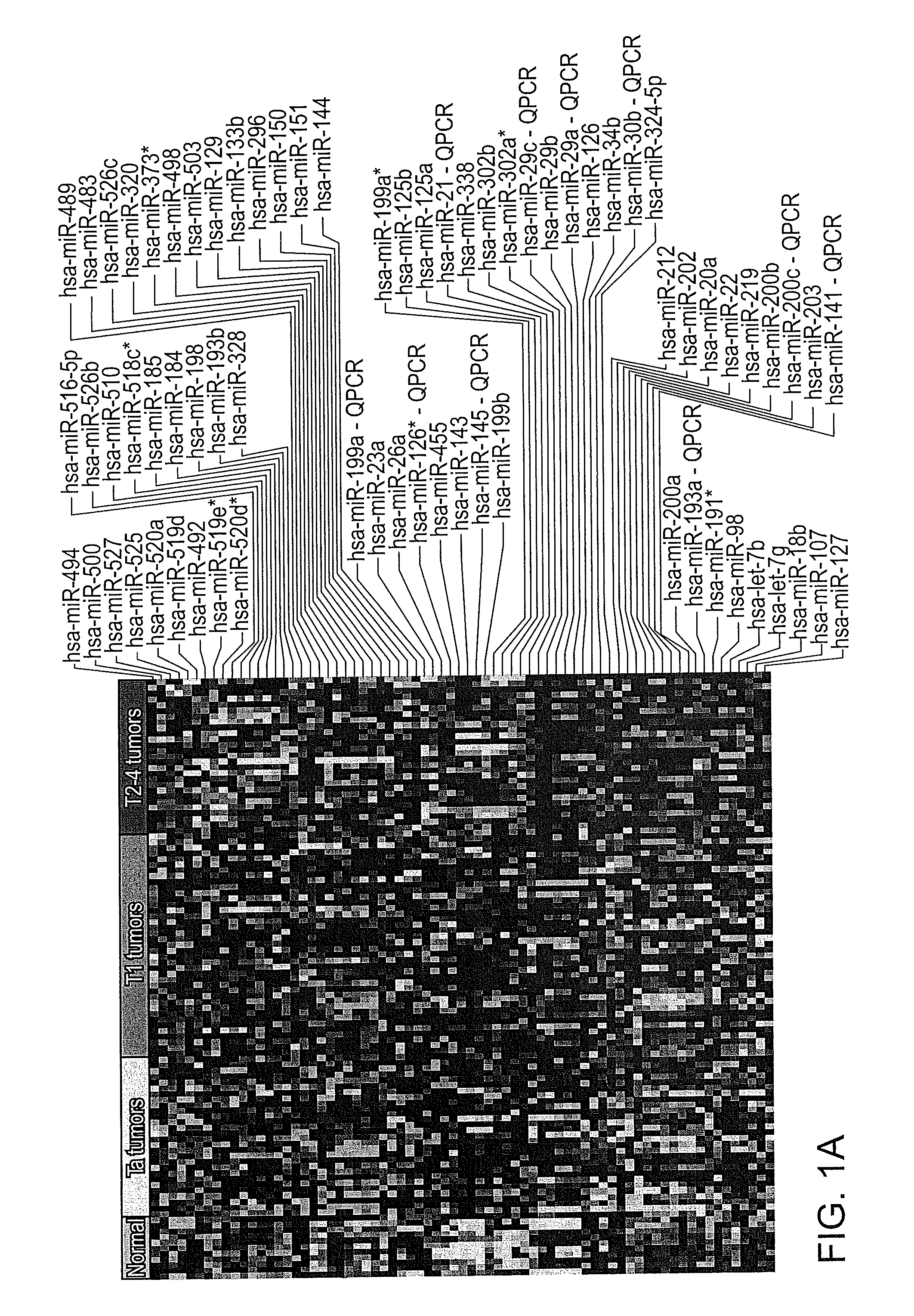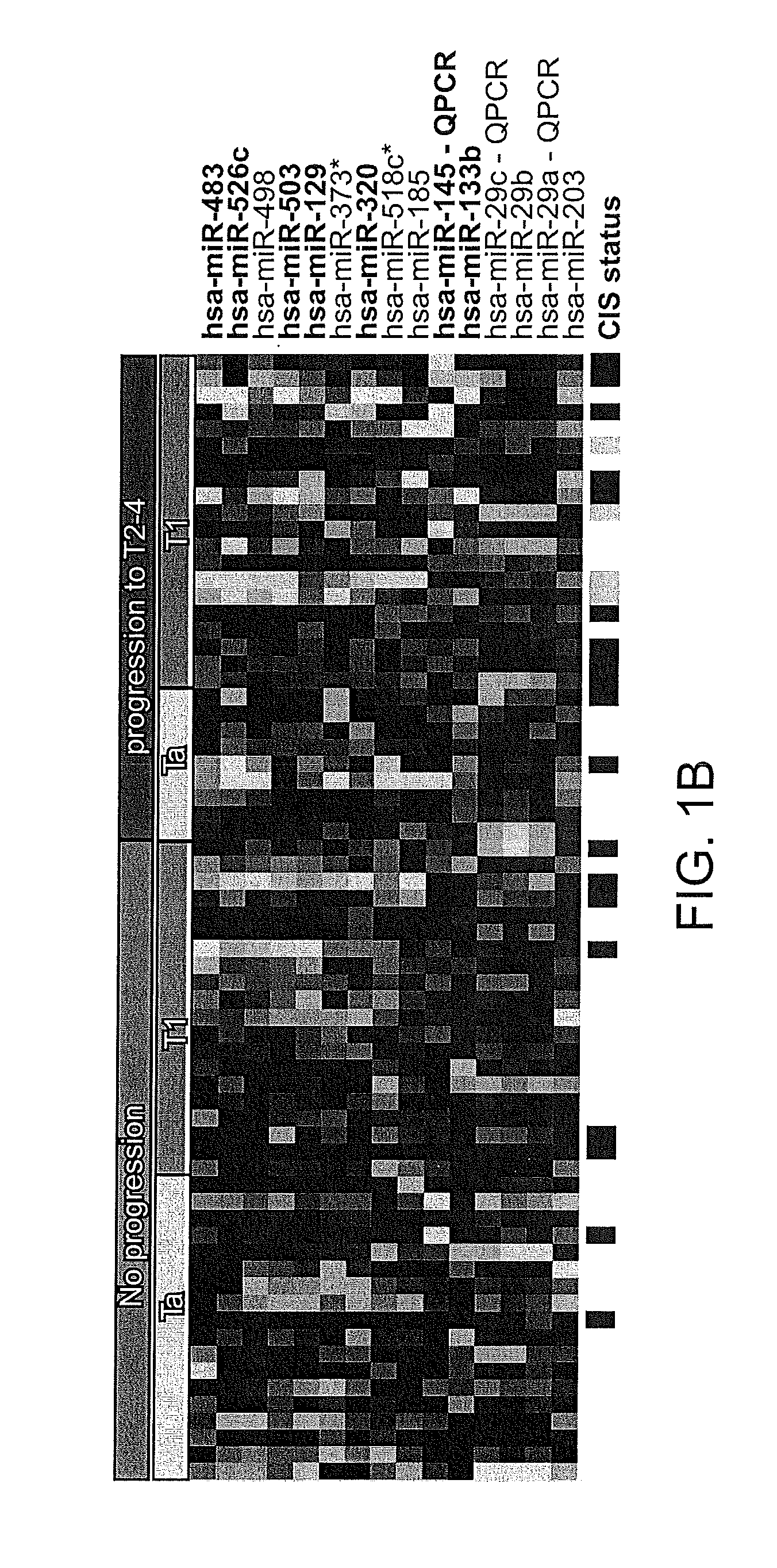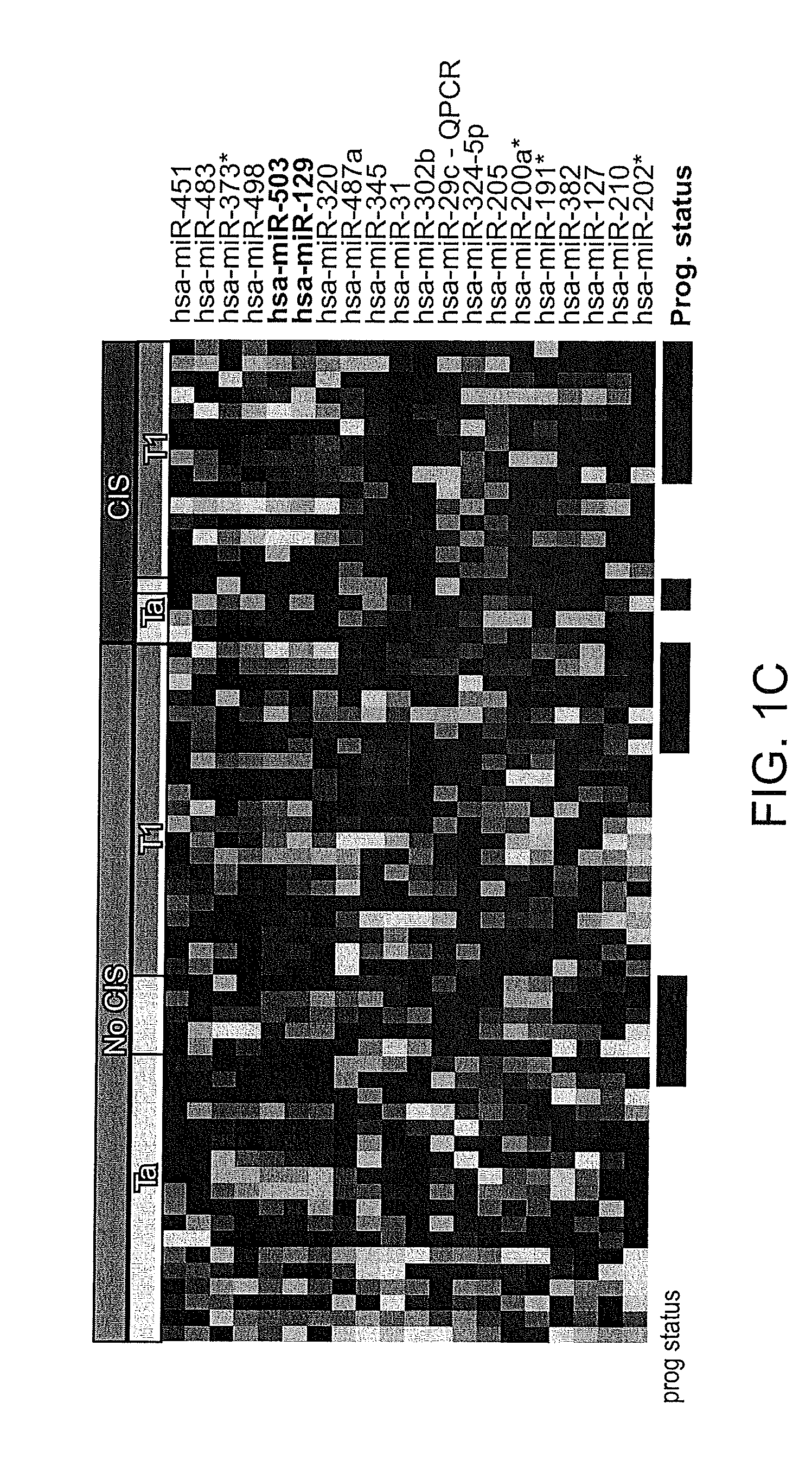Diagnostic and prognostic use of human bladder cancer-associated micro rnas
a technology of human bladder cancer and prognostic use, which is applied in the field of diagnostic and prognostic use of human bladder cancer-associated micro rnas, can solve the problems of difficult prediction of onset and disease progression of patients with non-muscle invasive tumors, and easy error
- Summary
- Abstract
- Description
- Claims
- Application Information
AI Technical Summary
Benefits of technology
Problems solved by technology
Method used
Image
Examples
example 1
miRNAs Differentially Expressed in Normal Bladder and in Bladder Tumors
[0180]Initially, miRNAs differentially expressed between normal urothelium, Ta, T1 and T2-4 stages were identified using SAM by performing 500 permutations and using an average FDR of 0% as cut-off level. The 80 probes against human miRNAs that showed significant differential expressions are listed in FIG. 1A. Exiqon probe ID numbers corresponding to those miRNAs shown in FIG. 1A are presented below in Table 2.
TABLE 2Exiqon Probe IDs Corresponding to FIG. 1A miRNAs.miRNAprobe IDhsa-miR-49411126hsa-miR-50011132hsa-miR-52711177hsa-miR-52511175hsa-miR-520a11165hsa-miR-519d11163hsa-miR-49211124hsa-miR-519e*13132hsa-miR-520d*13134hsa-miR-516-5p11151hsa-miR-526b11176hsa-miR-51011142hsa-miR-518c*13131hsa-miR-185 5560hsa-miR-18410978hsa-miR-19810993hsa-miR-193b10987hsa-miR-32811060hsa-miR-48911121hsa-miR-48313180hsa-miR-526c13137hsa-miR-32011054hsa-miR-373*11086hsa-miR-49811130hsa-miR-50311135hsa-miR-12910934hsa-miR-133b...
example 2
Select miRNAs Predicted Subsequent Disease Progression to T2-4
[0183]In order to identify miRNAs for predicting subsequent disease progression to a muscle invasive stage, non-progressing tumors (18 Ta and 20 T1 tumors) were compared to progressing tumors (9 Ta and 20 T1 tumors). The most significantly regulated miRNA were identified using SAM (500 permutations, average 0% FDR as cut-off). 15 miRNAs were identified as significantly differentially expressed between the groups (refer to FIG. 1B). When only T1 tumors were considered in the analysis, it was found that a subset of the miRNAs listed in FIG. 1B were significantly differentially expressed, namely; miR-483, miR-526c, miR-503, miR-129, miR320, miR-145 and miR-133b.
[0184]To identify the optimal set of miRNA for predicting disease outcome, a molecular maximum likelihood classifier was constructed using the leave-one-out cross-validation approach as previously described. The lowest error rate for cross-validation (25% error rate; ...
example 3
miRNAs Associated with Concomitant CIS
[0185]CIS (carcinoma-in-situ) has been identified as highly associated with subsequent disease progression. Several of the patients included in the present study were diagnosed with CIS in selected site biopsies at the present visit or at later cystoscopy examinations. SAM was again employed to identify miRNAs differentially expressed between tumors with or without CIS in selected site biopsies. When including both Ta and T1 tumors (N=63) in the analysis, 20 miRNAs were shown to exhibit significant differential expression between the two groups of tumors (refer to FIG. 1C). When only T1 tumors were included in the analysis (N=36), four differentially expressed miRNA (miR-129, miR-146, miR-17-5p, and miR-503) were identified. Consequently, miR-129 and miR503 were identified in both analyses. The most significantly differentially regulated miRNAs between non-CIS tumors and tumors with concomitant CIS were identified and are listed in Table 3 above...
PUM
| Property | Measurement | Unit |
|---|---|---|
| Time | aaaaa | aaaaa |
| Volume | aaaaa | aaaaa |
| Volume | aaaaa | aaaaa |
Abstract
Description
Claims
Application Information
 Login to View More
Login to View More - R&D
- Intellectual Property
- Life Sciences
- Materials
- Tech Scout
- Unparalleled Data Quality
- Higher Quality Content
- 60% Fewer Hallucinations
Browse by: Latest US Patents, China's latest patents, Technical Efficacy Thesaurus, Application Domain, Technology Topic, Popular Technical Reports.
© 2025 PatSnap. All rights reserved.Legal|Privacy policy|Modern Slavery Act Transparency Statement|Sitemap|About US| Contact US: help@patsnap.com



